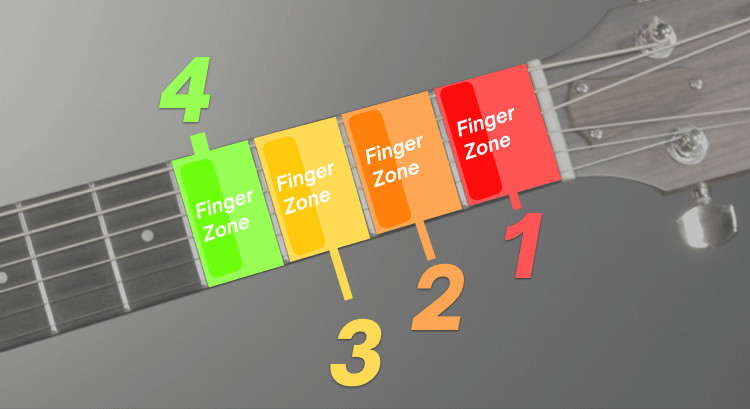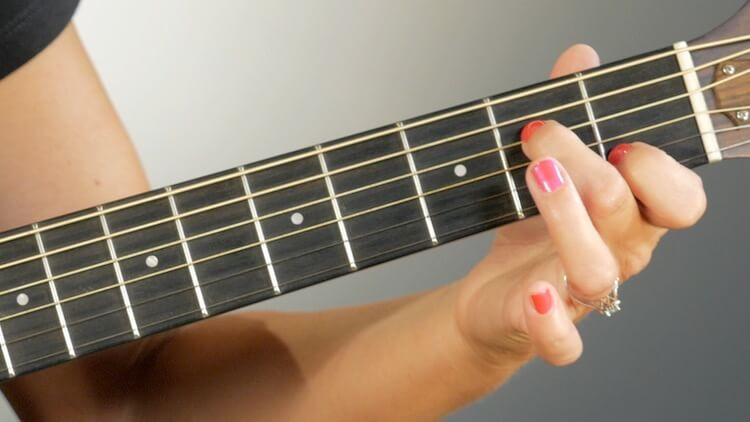The Am chord, or A minor, is a cornerstone for anyone starting their guitar journey. It’s often one of the first minor chords that new players encounter, and for good reason. Don’t let the term “minor” intimidate you; the Am chord is known for being relatively easy to learn, especially when compared to some of the trickier chords like the F major. At guitarplayers.net, we believe in making guitar learning accessible and enjoyable, and mastering the Am chord is a fantastic step in that direction.
Let’s break down how to play this essential chord step-by-step, ensuring you get a clear and confident sound.
How to Play the A Minor Chord: A Step-by-Step Tutorial
 Am guitar chord diagram
Am guitar chord diagram
Understanding Chord Diagrams: If you’re new to reading chord diagrams, they are visual representations of the guitar fretboard. The horizontal lines represent the frets, and the vertical lines represent the strings. The dots indicate where you should place your fingers. The numbers or symbols above the diagram may indicate which fingers to use.
Step One: Placing Your First Finger
Begin by positioning your first finger on the first fret of the second thinnest string (B string). Remember, guitar strings are ordered from thinnest (1st string) to thickest (6th string). When we refer to the “first fret,” we mean the space just behind the metal fret bar, closer to the guitar’s headstock, not directly on top of the fret.
 Finger zones on guitar neck
Finger zones on guitar neck
Imagine the fretboard divided into zones. For this first step, you’re placing your finger in the “orange finger zone” on the “orange string” as illustrated in the diagram. This ensures the correct placement and pressure for a clean sound.
Step Two: Adding Your Second Finger
Next, place your second finger onto the second fret of the fourth string (D string).
 Am chord step two finger placement
Am chord step two finger placement
Take a moment to observe the position of the second finger in the image. Notice how it is nicely curved, arching over the first three strings. This curvature is crucial as it ensures you are only pressing down on the fourth string with the tip of your finger. This technique prevents muting adjacent strings and contributes to a clear, resonant Am chord.
Step Three: Positioning Your Third Finger
Now, place your third finger on the second fret of the third string (G string). You’ll need to position this finger just underneath your second finger, both on the same second fret. This might feel a bit cramped at first, but with practice, it will become more natural.
Step Four: Strumming the Am Chord
For the Am chord, you won’t strum all six strings. Instead, you’ll strum only the thinnest five strings. Avoid strumming the thickest string (low E string) to achieve the correct sound for the Am chord.
Position your pick or thumb on the second thickest string (A string), and strum downwards across the strings from the A string to the thinnest string (high E string). By excluding the low E string, you’ll create the characteristic sound of the Am chord.
Tips for a Clear Sounding Am Chord
- Finger Pressure: Ensure you’re applying enough pressure with each finger just behind the fret. Too little pressure can result in buzzing or muted strings.
- Finger Curvature: Maintain a slight curve in your fingers to avoid accidentally muting adjacent strings, especially with the second and third fingers which are close together in the Am chord.
- Strumming Technique: Strum smoothly and evenly across the correct strings. Avoid hitting the low E string for the Am chord.
- Guitar Setup: A well-setup guitar with appropriate action (string height) will make playing chords significantly easier and cleaner, especially for beginners.
Practice and Enhance Your Am Chord Skills
Consistent practice is key to mastering any guitar chord, and the Am chord is no exception. Here are some effective ways to practice and solidify your Am chord skills:
- Chord Repetition: Practice transitioning into the Am chord and strumming it repeatedly. Focus on achieving a clean sound each time.
- Chord Changes: Practice switching between the Am chord and other beginner-friendly chords like C, D, Em, and G. Smooth chord changes are essential for playing songs.
- Use a Metronome: Practice playing the Am chord and chord changes in time with a metronome to develop your rhythm and timing.
- Explore Songs: Learn simple songs that utilize the Am chord. Playing songs is a fun and motivating way to apply your chord knowledge.
Utilizing Tools for Am Chord Mastery
To further assist your learning journey, consider leveraging tools and resources designed to make chord practice more engaging and effective.
- ChordBank App’s Chord Coach: For interactive, step-by-step guidance, apps like ChordBank offer “Chord Coach” features. These tools listen to you play and provide real-time feedback, string by string, helping you refine your technique.
 ChordBank App on iPhone
ChordBank App on iPhone
- Guitar Learning Games: Gamified practice can make learning more enjoyable. Apps often include games like “Blast-o-chords” or “ChordPOP!” that challenge you to play chords correctly to achieve game objectives, turning practice into a fun activity.
 ChordBank App on iPhone
ChordBank App on iPhone
- Smart Flashcards for Chord Transitions: To improve your chord changing speed and accuracy, utilize “smart flashcard” features found in many guitar learning apps. These flashcards guide you through transitions between chords, like Am to C, helping you build muscle memory and fluidity.
Incorporating Am Chord into Chord Progressions
Once you’re comfortable playing the Am chord, start exploring common chord progressions that feature it. The Am chord is frequently used in popular progressions such as:
- Am – G – C – F
- Am – C – G – Em
- Am – F – C – G
Practicing these progressions will not only improve your chord changes but also allow you to start playing countless songs and develop a musical ear for how the Am chord functions within different keys and musical contexts.
Conclusion: Embrace the Am Chord and Continue Your Guitar Journey
The Am chord is a fundamental building block in guitar playing. By mastering this chord, you unlock a vast repertoire of songs and open doors to more complex musical concepts. Remember to practice consistently, utilize available resources, and most importantly, enjoy the process of learning and making music on your guitar. Keep exploring at guitarplayers.net for more beginner lessons, chord guides, and resources to support your musical journey!
Author: Anna Freitas (Guitar Instructor at guitarplayers.net)
